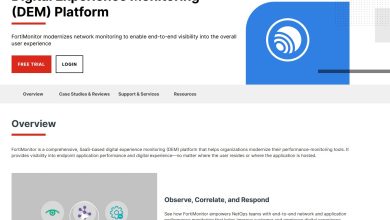
“Organizations that use the Covid-19 crisis to reflect, learn and adapt will be best positioned to emerge stronger, with purpose, and ready to respond to the challenges that certainly lie ahead.” -David Michels, Leadership Strategy
The deadly virus COVID-19 is no longer a buzz or a new topic to discuss. People are now very well acquainted with the prevalence of this deadly virus and the adverse effects it has caused globally. Albeit we are living in a fast-paced, technology driven world, we still were not up to the mark when it comes to adapting to the changes. Businesses and organizations were poorly stirred by the more enormous impacts it had on the economy and marketplace. The six inches distance among people created a larger gap between the businesses and consumers. The onset of the pandemic marked that around 100,000 businesses were temporarily closed, and more than 98,000 were out of business permanently. This hustle-bustle in the market and economy caused changes and modifications which need to be followed by businesses for survival.
While a part of the global economy has started to hum again, many small and medium businesses still struggle with the need for economic aid and stimulus to withstand these changes. Significant impacts are seen on the B2B ecommerce sales and operations. Some of the challenges faced during this period are listed below.
- Downturn in ROI up to 50 – E-commerce companies have predominantly seen declines in sales. Around 58% of e-commerce businesses engaged in selling goods and services on online platforms have experienced a half reduction in their total sales. This can be attributed to the precautions taken during the lockdown, including limited goods transportation and restrictions to the movement of people.
- Disruptions in Supply Chains and Trade Logistics – Trade and logistics facilitation were a significant challenge encountered by more than two-thirds of the organizations around the globe. This was closely linked to the disrupted supply chains because of the lockdown, closure of business, and prohibited borders. Moreover, around 52% contemplated that their limited operations and logistic operations resulted from restrictions to movement.
- Commencement of the New Normal – Fluctuations during COVID and the imposed lockdown with several reopening cycles have significantly impacted the consumer. Roughly 88% of consumers chose online shopping platforms to place their orders between March 2020 and December 2020, and around 52% chose in-store or curbside pickup.
- Wind up of Retail industry – Retail businesses involved in handling food necessities, including supermarkets, convenience stores, and medical stores, were in good condition due to the government’s request to continue the essential business. On the other hand, nonessential items such as luxury goods, apparel, home appliances and furnishings faced a sharp decline, and the retailers handling these goods were stagnated. For instance, Clothing retailers experienced a dropdown by 89.3% in the year 2020 as recorded in the United States. More than 70% of businesses were forced to wind up as the crisis situation prevailed.
The imposition of lockdowns, social distancing, and other maneuvers in response to the COVID-19 pandemic induced consumers to digitize their lifestyle and increase their engagement in online shopping, social platforms use, internet browsing, and video teleconferencing, along with streaming of videos and movies. This resulted in hikes in B2C (Business-to-Consumers) sales and a boost in B2B (Business-to-Business) e-commerce. Increased online sales of medical supplies, food products, and household essentials are a part of B2C sales.
The virus outburst deviated the focal point towards the evident need to bridge the digital split, both within and beyond countries, as the digital economy has been laying a vital mark during this crisis. As a result, there has been a sheer modification in most traditional approaches and a big swap to e commerce activities. This has highlighted the need for efficient and affordable services such as telecommunication, IT services, and other emerging information and communications technologies.
“As part of their heroic efforts to thrive during Covid-19, many companies have implemented technologies and solutions to facilitate enhanced communication, a positive work culture and improved employee business performance during trying times.”
-Ofir Paldi, Founder & CEO of Shamaym
Businesses have turned their faces towards digital transformation, which has resulted as a fruitful step during the crisis as more and more consumers opt for online platforms for all their needs. It has helped businesses in several aspects:
- Visible Presence on Digital Platforms – Your business presence on the Internet via online stores, blogs, social platforms, and corporate websites enhanced the visibility of your company and sales channel. Companies are initiating this as a digital marketing strategy and prefer online commerce over traditional conventions.
- 150+ online marketplaces opted by customers – Ecommerce platforms have been in great demand since consumers were not accessible for offline shopping methods. Most of the small and newborn businesses have taken the shelter of ecommerce platforms such as Amazon, Flipkart, eBay, Walmart, Sears, Noon, etc. to build their brand and continue their operations.
- Doorway to ORM: ORM or Online Reputation Management amalgamates traditional marketing and public relations with the added hue of search engine marketing. This technique allows the search engine results to prevent your brand’s reputation from online negativity exposure. Digitization creates a bridge for ORM strategy via Local SEO, Influencer media marketing, and mobile marketing to help you to:
- Directly communicate with dissatisfied customers and improve their experience. • Retrieve customer relationships by resolving conflicted service process
- Cut down marketing costs by allowing direct communication with customers. • Increase brand awareness by your involvement in customer’s dialogue
- Third-Party Tools for operational benefits: Digitizing brings an introductory frame towards third-party tools beneficial for your day-to-day operations and productivity. These tools are more of a necessity rather than a new thing to try. These tools make daily tasks much more manageable, along with enhancing productivity and efficiency gains.
The market ecosystem has outgrown its comfort zone and is broadly tuned with digital changes and its adaptation. This migration has helped in reposition of several industries and sectors. The aftereffects of this transformation are stated below:
- Swap to online shopping – With a large population having access to the Internet and given the pandemic situation, restricting movements has created a surge in online shopping. People are now adapting to modern techniques and leaving behind the bygones. Online shopping and add to cart are the new trend. Ecommerce sales in the United States alone is expected to overshadow $740 billion by the year 2023.
- SMEs experienced a 40% boost – Small to Medium Enterprises are facing a significant impact due to the digital transformation in the situation. These enterprises are offered prolific and abounding participation in the market ecosystem. SMEs have spent approx. 685 billion US dollars in 2021 as they have adopted digitization. These SMEs have the caliber to expand consumer segments in a brief time compared to offline businesses regarding increased revenue, efficiency in operations, and enhanced customer experience.
- Homegrown Labels Popularity – People have shifted their focus towards local brands and recognize their businesses. There has been an accelerated rise in the popularity of local brands. More homegrown labels have muscled up into markets as their demand grows. Artisanal handicrafts, handlooms, vintage clothing, baking and other businesses gained prominence on the online platforms. These homegrown brands carved their identity with a centrally unique selling proposition that helped them to separate themselves from the competition.
- 45% More Logistic Established – Logistics companies are seizing the ongoing digital transformation and embracing it for speedy and efficient operations. The rapid growth in ecommerce has resulted in the alleviation of strains placed by the stoppage of movement. This has allowed the small companies to access a global reach and established giants in the market. In 2020, the global logistics market was estimated around a value of US $5.2 Trillion.
- Mobile App Development – AI has played a significant role in this setting. People have become more reliable on different applications and software to carry out every aspect of their lives, ranging from work to socializing. Everything and everyone are now online. Mobile apps allow your business an opportunity to give your customers a personalized experience. Catering to personal needs with customized services via your mobile app helps maintain regular interaction and ensures customer satisfaction. Industries in every realm are focused on their online presence and services, including Zomato, Doordash, Udemy, Grubhub, Instagram, Instacart, Uber eats and many more.
With the advantages mentioned above, it is very apparent why your business needs to get digitized. Tech2Globe is one of the leading Amazon Global Certified Company, which helps businesses with a 360-degree digital solution for their entrepreneurial vision. With more than seven years of experience, they established themselves as a renowned organization in the Information Technology market. They work with more than 5000+ sellers globally to market their products and services in Amazon, eBay, Sears, and Etsy.




